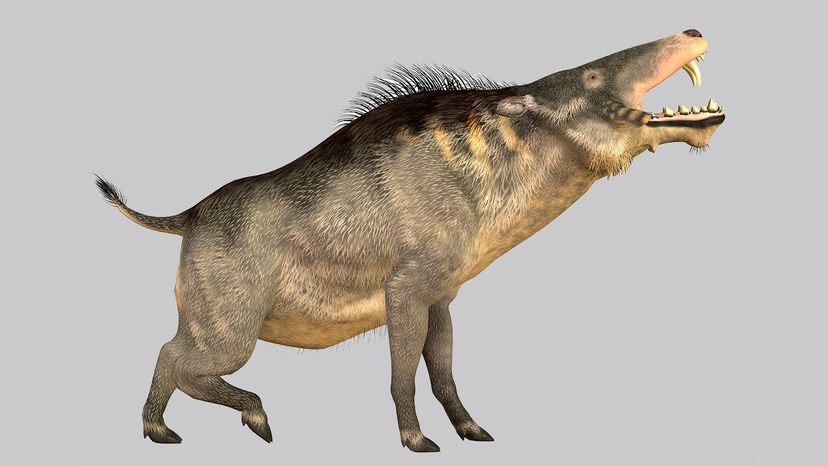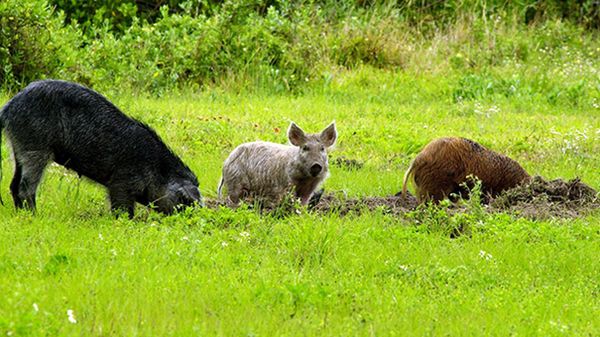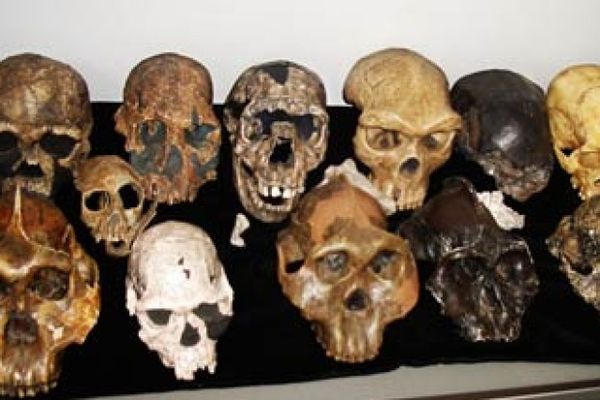
It looked suspiciously like a meat cache. In 1999, the Society for Vertebrate Paleontology was given areport on a strange bonebedfound near Douglas, Wyoming. Huddled together in a big pile were the fossilized skeletons of at least six differentPoebrotheriumcamels. Compared to the hump-backed beasts of burden we know today, these were relatively small, about the size of domestic sheep. The skeletons at this particular site were deposited around 33.4 million years ago, during the earlyOligocene Epoch.
Many of thePoebrotheriumspecimens had retained their heads, necks, rib cages and front legs. But the back legs and the hips — in other words, the camels'meaty hindquarters— were missing. What's more, distinctive toothmarks riddled the bones. The evidence suggests that the pile of camel remains might've been a prehistoric meat locker, a place where some predators haddragged and storedtheir victims.
Advertisement
A look at the region'sfossil recordtells us there was a killer beast alive back then whose teeth perfectly match those gnarly bite marks. Its name wasArchaeotherium. Weighing an estimated 600 pounds (270 kilograms) and measuring 4.5 feet (1.4 meters) tallat the shoulder, this creature would've been a sight to see. It walked on cloven hooves; its legs were long and thin; there were bony knobs on its jawbones; and the animal's lengthy snout was full of crushing teeth.
Archaeotheriumbelonged to a group of omnivores who patrolled Eurasia, North America and Africa for millions of years: These were the terrifying entelodonts.
Advertisement



